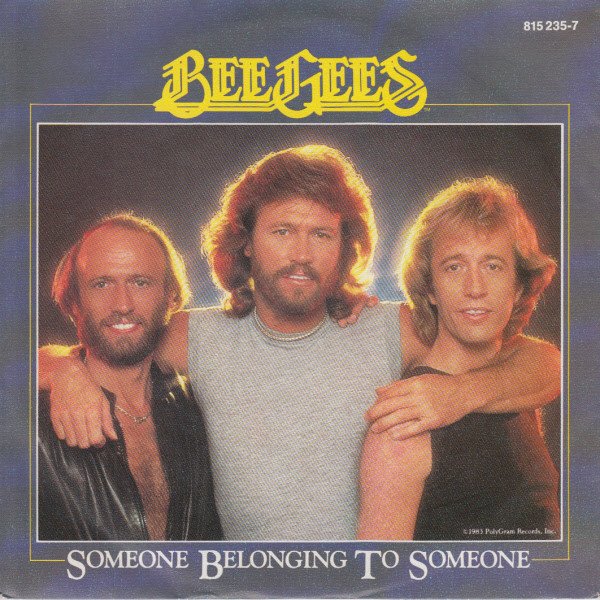
Introduction:
“Someone Belonging to Someone” is a tender and introspective ballad by the prolific British group, the Bee Gees. Released at a point in their career following the stratospheric heights of the disco era, the song showcased a different facet of their enduring musicality – a return to the heartfelt melodicism that had been a hallmark of their earlier work. The track was specifically created for the soundtrack of the 1983 film Staying Alive, the sequel to the massively successful Saturday Night Fever.
The song “Someone Belonging to Someone” was released in 1983. It served as the second single from the official movie soundtrack album, “Staying Alive: The Original Motion Picture Soundtrack”. This album predominantly featured new songs written and performed by the Bee Gees, specifically for the film, alongside a few tracks by other artists. The release of the soundtrack in June 1983 coincided with the movie’s premiere, aiming to recapture the cultural and commercial impact of its predecessor.
Falling broadly under the Soft Rock and Pop genres, “Someone Belonging to Someone” is characterized by its smooth production, gentle instrumentation, and the Bee Gees’ signature harmonies, with a prominent lead vocal. While the Bee Gees had become synonymous with disco in the late 1970s, the early 1980s saw them explore a more refined pop and soft rock sound, which is perfectly exemplified by this ballad. The arrangement features lush keyboards, subtle guitar work, and a steady, mid-tempo beat, creating a romantic and slightly melancholic atmosphere that complements the lyrical theme of complex relationships. Some might also categorize it with elements of Blue-Eyed Soul due to the emotive vocal delivery and the R&B influences present in the song’s structure and feel, a genre the brothers often touched upon throughout their career.
The history of “Someone Belonging to Someone” is closely tied to the production of the Staying Alive film. Following the monumental success of the Saturday Night Fever soundtrack, which was dominated by the Bee Gees’ compositions and performances, expectations were high for the sequel’s musical accompaniment. The Gibb brothers were once again enlisted to write and perform the majority of the new songs for the soundtrack. “Someone Belonging to Someone” was written by all three brothers: Barry, Robin, and Maurice Gibb. The recording sessions for the song took place around November and December of 1982, shortly after Robin Gibb had been working on his solo album How Old Are You?. Maurice Gibb was also involved in the recording, contributing instrumental work. The production was handled by the Bee Gees themselves, in collaboration with their long-time production team, Albhy Galuten and Karl Richardson, who had been instrumental in shaping their sound during their peak years.
Upon its release as a single, “Someone Belonging to Someone” achieved moderate success on the music charts. In the United States, it reached a peak position of number 49 on the Billboard Hot 100 chart. In the United Kingdom, the single also charted, peaking at number 49 on the UK Singles Chart. While these chart positions were not as high as the multi-platinum hits from the Saturday Night Fever era, they still represented a respectable performance for a ballad released during a period of shifting musical tastes. The song also saw chart performance in other countries, including reaching number 23 in Belgium and number 55 in Germany. Its inclusion on the Staying Alive soundtrack album contributed to that album’s overall commercial performance, although the soundtrack did not replicate the colossal success of its predecessor.
“Someone Belonging to Someone” is often highlighted by fans as one of the standout tracks from the Staying Alive soundtrack, appreciated for its emotional depth and the Bee Gees’ signature vocal delivery. Although it may not have achieved the global chart dominance of their biggest hits, the song remains a cherished part of the Bee Gees’ extensive catalog, demonstrating their continued ability to craft well-written and beautifully performed ballads in the early 1980s. Its lasting achievement lies in its contribution to the soundtrack of a major motion picture and its enduring appeal to fans who appreciate the softer side of the Bee Gees’ diverse musical output. The song is a testament to the brothers’ consistent songwriting talent, even outside of their most commercially dominant periods.